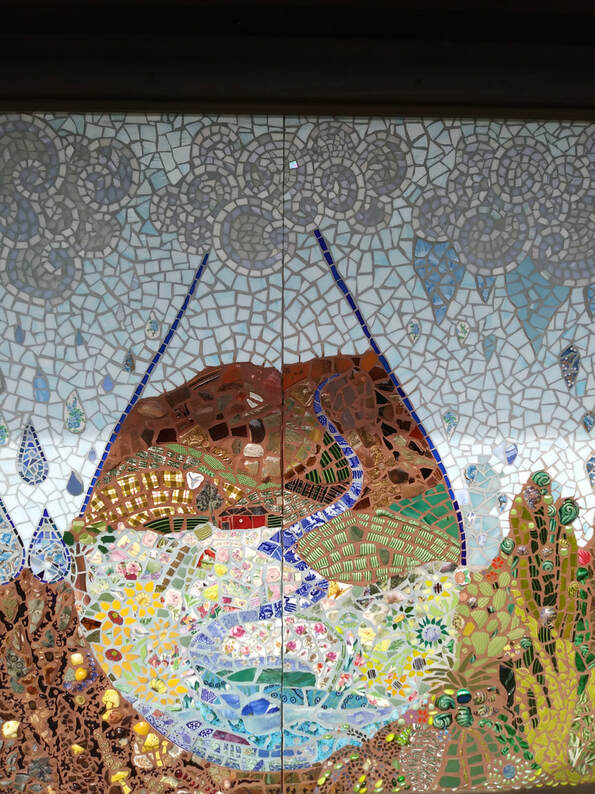We forget that the water cycle and the life cycle are one. - Jacques Cousteau
Los Angeles flooded 17 times between 1815 - 1938, resulting in many deaths and property damage. The United States Army Corps of Engineers led a colossal effort to yoke the Los Angeles River, Rio Hondo River and San Gabriel River. They wanted to be prepared for the next 100-year flood (a flood event that has a 1% probability of occurring each year). Men from the federal unemployment rolls moved mostly by hand more than 20,000,000 cubic yards of earth, poured 2,000,000 cubic yards of concrete and placed 150,000,000 pounds of reinforced steel.
This was a classic Man vs. Nature battle. The engineers succeeded in creating massive, concrete diversion swales that rapidly disposed of rainwater, but failed to allow water to infiltrate into the ground. Useful freshwater that naturally recharged the groundwater flowed to the ocean only to become salinated . 60% of LA is paved over by streets/parking lots which also contribute to absent groundwater. Most homes have a high amount of impermeable surfaces - (concrete, asphalt, brick, artificial turf). The net effect: freshwater is being flushed away/polluted while California siphons 1.4 trillion gallons of freshwater every year.
When 2.5 % of the planet’s earth is freshwater, but less than 1% is easily accessible, rain is a gift that we should embrace.
A bioswale uses rocks, mulch, plants and basins to encourage water to collect and infiltrate our soil. By capturing/storing rainwater on your property you reduce pollution. As rainwater collects, it picks up herbicides, fertilizers, and pesticides. Runoff from our homes transports contaminants and combines with pollutants on the streets (engine oil, antifreeze, heavy metals) and eventually pollute the ocean. Beaches closures occur when raw sewage is added to the mix. Nitrogen and phosphorus, found in fertilizers, encourage harmful algae blooms, depleting the ocean of oxygen and robbing sea life of sunlight.
Harvesting rainwater lowers your water usage and reduces pollution that flows to the sea. Bioswale plants absorb some pollutants into their systems and store them. Some plants (willows and sunflowers, etc.) are better than others at uptaking pollutants. Phytoremediation employs plants to remove contaminants from soil, groundwater, surface water, soil and sediment. Gutters/downspouts have been designed to flush away rainwater as if it is a waste product. Rainwater can be captured by rain barrels and then overflow into your bioswale. Cisterns can more effectively capture large amounts of rain. Cisterns can store hundreds to thousands of gallons of water that can be used to water your landscape.
Additional Book Resources:
Rainwater Harvesting for Drylands and Beyond Volume 1 and 2 by Brad Lancaster
Creating Rain Gardens by Cleo Woelfle-Erskine and Apryl Uncapher
Water-Wise Home by Laura Allen
-------Jonas Stafford




